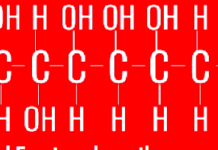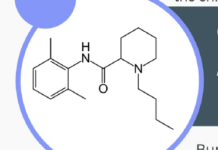What can the concrete truck driver do if he or she is hopelessly stuck in traffic with 20,000 pounds of material hardening in the twirling drum on the back? Add sugar. Really!
Very little new construction can take place without the use of concrete. It’s used all over the world. To find out how much is being used, experts track the key component of concrete, Portland cement. According to the latest statistics, nearly 2.9 billion tons of cement was produced in 2008, reports cemnet.com, publishers of the International Cement Review. Most of that cement was used in China; the United States ranked third worldwide, adds cemnet.com. According to the Portland Cement Association, the United States used nearly 94 million metric tons worth of the stuff in 2008, worth $10 billion.
Portland cement is a careful blend of limestone and clay. The mixture is crushed to form a powder, which is then heated to about 1500ºC to convert the limestone to lime and melt the ingredients. After it cools, a lumpy gray material called clinker is left. Gypsum is then added and the clinker is ground into fine particles.
To make concrete, sand, coarse aggregate such as gravel, and water are added to the Portland cement. The ingredients are mixed, and a process called hydration turns the Portland cement into a rock-hard mass. Hydration means water is incorporated, so wet and cured concrete weigh about the same- the concrete doesn’t get lighter as it “dries”.
Other materials can be added to the Portland cement or to the final concrete mix to alter the engineering properties such as workability, strength, and curing time.
Sugar is a well-known and inexpensive concrete retarder . Concrete usually takes about two hours to begin to harden once it is mixed. Sugar is thought to interfere with hydration. About 10 pounds of sugar in a full load of concrete buys the driver an additional four hours.














Great article. I wonder what is the mechanism behind the sugar interfering with the hydration of the concrete.
Interesting story. I had no idea that sugar was a concrete retarder. Now when I see a concrete truck I’ll think of this article.
Great topic! I always enjoy reading about a practical use of a common "chemical" to solve a real-world problem.
I enjoyed the article, but I think it could have focused more on the science behind the sugar’s function as a hyrdration "retardant", especially since that was the focus of the lede.
:smile
I thought this article was quite intriguing, and I had never heard of sugar as an additive to slow the hardening process of cement. If sugar interfers with hydration, how does that effect the hydration of humans? Just curious. Anywho, good article that relates a common predicament with a simple solution! BRAVO!
Is there a chemical reaction that takes place that slows the drying process?
I liked the article, but I thought it needed to focus on sugar more. I didn’t see any cohesive element that brought it all together; the article seemed more like facts stated. But, I thought it was good because you left me wanting to know more about the subject.
This was a very interesting article. I liked the fact that something as simple as sugar could save a lot of time and money when dealing with concrete. I also liked reading about the hydration process and how it is necessary to make sure that dry concrete is just as heavy as wet concrete.
I think this article was very clear in expressing the topic, however I wish it would have gone more in depth on the sugar retardent and it’s affects on cement.
Wow …I really do learn something new very day!
This is a cool article. I didnt know they used sugar to keep the concrete from getting dry and hydrated
i did not know sugar would keep concrete cool wow interesting…..
…this article is very interesting but i do believe that the article should have been a little longer also i think it should have been more detailed but good job! :smile
good article.so is concrete made with sugar
This is a very interesting topic most average joes would have no idea about (including myself)its well pieced together and provides interest to a large portion of readers